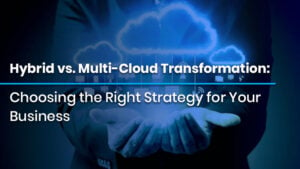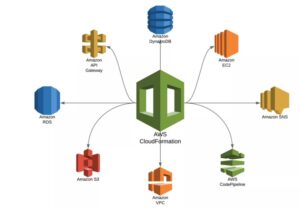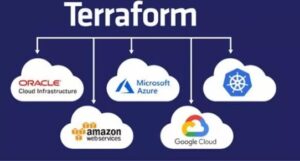
How to Strengthen Security Using CIS Controls and Posture Analysis
How to Strengthen Security Using CIS Controls and Posture Analysis Introduction In the fast-paced and ever-evolving world of cybersecurity, defending digital infrastructure goes far
🔥Premium Monthly Plan – Only $11.99!🔥Hurry! This exclusive deal won’t last long. 👉 Subscribe Now!

How to Strengthen Security Using CIS Controls and Posture Analysis Introduction In the fast-paced and ever-evolving world of cybersecurity, defending digital infrastructure goes far

How to Prepare for the AWS Data Engineer Exam Introduction With the world becoming increasingly data-driven, organizations are depending on cloud-based systems to store, process,

Hybrid vs. Multi-Cloud Transformation: Choosing the Right Strategy for Your Business Introduction In the digital-first economy of today, cloud transformation is no longer a
Table of Contents
CloudFormation and Terraform are popular Infrastructure as Code (IaC) tools used to manage and provision cloud resources. Both tools enable users to describe infrastructure as code and automate cloud resource provisioning and deployment. This article covers detailed knowledge of CloudFormation and Terraform and their differences.
Infrastructure as Code (IaC) is a type of infrastructure configuration management that commits the infrastructure components of a company into text files under version control. Your infrastructure requirements are contained in these text code files, making configuration editing, duplication, and distribution simpler.
Infrastructure management used to be a labor-intensive manual procedure. Each server had to be configured by the individual deploying it and needed to be physically placed and arranged. Software and apps could not be deployed until they had been manually configured. This procedure was cumbersome, expensive, labor-intensive, and, unsurprisingly, allowed a lot of room for human mistakes that led to outages. Due to inconsistencies in the original configuration, it was necessary to send technicians to troubleshoot and resolve issues when they arose physically. This could become a challenging and time-consuming process. Using tools like server tracking was impossible because networks were not cloud-enabled.
The need for physical infrastructure management and provisioning procedures is decreased or eliminated when infrastructure is managed as code. IaC eliminates ad hoc, undocumented configuration changes and establishes process consistency by committing these infrastructure configuration specs to code and keeping thorough version control notes.
CloudFormation is an AWS-native tool that enables users to define and provision AWS infrastructure as code. With CloudFormation, users can create and manage a wide range of AWS resources, including EC2 instances, S3 buckets, and RDS databases. CloudFormation uses YAML or JSON templates to define infrastructure as code, which can then be used to create a “stack,” a collection of AWS resources deployed and managed as a single unit.
CloudFormation templates can be version-controlled like any other code and easily shared and reused across teams. CloudFormation also provides a graphical interface called the CloudFormation Designer, which allows users to create and edit CloudFormation templates visually.
With CloudFormation, users can manage the entire lifecycle of their AWS resources, including provisioning, updating, and deleting resources. CloudFormation provides an easy way to create and manage complex infrastructure setups, such as multi-tier applications, with a single template.
Here is a brief overview of how CloudFormation works:

The following are a few benefits of using AWS CloudFormation:
Using CloudFormation, you can create, update, and delete a collection of resources together as a single unit called a stack. CloudFormation also supports templates authored in JSON or YAML format. You can use various tools to create and manage CloudFormation templates, such as the AWS Management Console, AWS Command Line Interface (CLI), and Integrated Development Environments (IDEs).
Terraform is an open-source Infrastructure-as-Code (IaC) tool developed by HashiCorp that enables users to provision and manage infrastructure on various cloud platforms, including AWS, Google Cloud Platform, and Microsoft Azure. Terraform defines infrastructure as code using a declarative language called HashiCorp Configuration Language (HCL).
With Terraform, users can define their infrastructure as a set of resources, such as virtual machines, load balancers, and databases, and then declare their dependencies and relationships. Terraform then uses this information to create a plan to deploy the infrastructure, and users can review and approve the plan before applying the changes.

Here is a brief overview of how Terraform works:

Terraform provides several benefits for managing cloud infrastructure:
AWS CloudFormation and Terraform are powerful tools for managing cloud infrastructure using infrastructure as code (IaC). Both devices benefit from working infrastructure as code on AWS and can help automate and streamline your infrastructure management workflows.
© 2025 All rights reserved | Privacy Policy | Terms and Conditions | Sitemap | Cookie Policy




